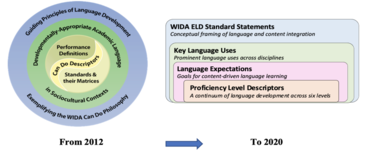Public schools’ lack of cultural and linguistic responsiveness to Somali families is leading many of them to change schools, move to charter schools, relocate to a different area of the United States, or return to Somalia. To mitigate this growing problem, schools have been using cultural mediators to help create a bridge of communication and hiring teachers of color for a better representation of diversity in schools.
Keywords: Somali culture, education, academic barriers
When I was in middle school, I had a hard time getting to know my classmates, especially my Somali peers. The average person might attribute this to my quiet demeanor; however, the real reason had nothing to do with being introverted. In fact, I was very isolated because I was often the only non-White student in my classes. Occasionally, other Somali-American students would appear, but then many of them would soon transfer to a different school or even move back to Somalia in some cases. This made it difficult for me to form relationships with them before they left. Ultimately, being the only Somali-American in the school affected my engagement in learning.
My experience of cultural and linguistic isolation in schools is the reality for many Somali students in U.S. public schools (Koch, 2007). Schools often do not address Somali students’ isolation, nor do they actively support their language and culture (Birman et al., 2001, as cited in Koch, 2007). Due to reasons such as these, many Somali parents move their children to different schools in hopes of finding the right fit. The constant relocation of Somali families could be one of the reasons it is difficult for Somali youth to complete their high school education. In Minnesota, 34% of Somali-Americans aged 25-64 do not have a high school diploma, compared to only 3% of the White population in Minnesota (Johnson, 2018). When Somali students come to a U.S. public school after emigrating from Somalia, they need relevant education that does not conflict with their language, culture, and religion. As a Somali-American high school student myself, I would like to share my perspectives on why many Somali families are not content with their children’s education and how public schools can better support their students’ educational journey.
Somali parents’ expectations and motivations for their children’s education
To fully understand Somali students’ struggle for quality education, it is important to understand why Somali families have resettled in the U.S., Canada, and Europe. Obtaining a quality education in Somalia itself has been very difficult in the aftermath of the Somali Civil War. Nonetheless, before the start of the war, most Somalis lived in rural areas and adhered to the teachings of Islam. The society was mainly democratic and there were various clans that made up the country’s population. Both men and women had roles in the community that had equal importance. However, the civil war affected daily life in many aspects, including Somali public education. For the promise of safety and opportunity, many families emigrated from Somalia and looked for better lives free of conflict (Putman & Noor, 1993, as cited in Koch, 2007, p. 2). Furthermore, in the 1980s (pre-civil war), Islamic religious schools were the only type of schooling available to the public in Mogadishu (Iftin & Alexander, 2018). The civil war continues today and has lowered the opportunities for education available to the Somali public. Of course, it is important to note that many refugees do manage to obtain excellent educations in some private schools in Somalia, as well as in surrounding countries such as Kenya, Ethiopia, and Djibouti.
Along with these historical reasons, until immigration to the U.S., Somali parents are also used to schools in Somalia and neighboring countries reflecting their culture, including Islamic holidays, studies, and values, along with academic subjects. Because most Somalis share a similar culture and religion, numerous Somali families are surprised by the Christian-centered community dynamic in their new homes. In my experience, school culture in the U.S. unconsciously adopts Christian values, customs, and holidays. The new ideas and different curriculum in these American and European areas make Somali parents feel hesitant and unqualified to get involved with their children’s education. In order to maintain their cultural identity, Somali families move to areas with a high Somali population and, if all else fails, relocate to Somalia or to the Middle East.
Choices of Somali families
The results of cultural assimilation
Non-Somali people often criticize and discriminate against Somalis due to factors such as their culture, religion, language, and race (Koch, 2007). Thus, in an attempt to fit in, some Somalis try to use Black culture and hip-hop as a source of comfort (Bigelow, 2008). It is apparent that Somalis are working hard to adapt to their social surroundings and are putting in numerous efforts to build relationships with their peers.
However, in the process of cultural assimilation, Somalis can lose a part of their cultural identity as well. Moreover, this aspect of coping can be seen in a negative light by the public. They, along with their Black classmates, experience discrimination within the schooling system due to assumptions made about their race, culture, ethnicity, and immigration status. These students feel that they have fewer opportunities to gain jobs and attend college due to the blatant prejudice that exists (Bigelow, 2008). Ignorant assumptions are a major shadow over their academic achievements and progress (Maira & Soep, 2013). The false ideas created about Somalis are then reflected onto the entire Somali population. In turn, it should be noted that Somalis have also found ways to use Black culture in a positive light. While Somali parents still disapprove, Somali youth draw on Black vernacular and music as ways to build their identities (Maira & Soep, 2013). Through this process, Somalis are better able to express themselves linguistically and can communicate with their teachers and peers on another level (Maira & Soep, 2013). Therefore, Somalis can learn more about the English language by looking toward Black culture and becoming confident in their linguistic skills. They use aspects of this culture to bring a sense of belonging, advocate for their future through verbal speech, relieve stress by listening to Black music, and make friends within the Black community.
Charter schools
Undoubtedly, Somalis have the power to make a variety of decisions to overcome any obstacles that might form in their path. If moving away and adopting local culture does not allow Somali children to overcome their educational hardships, many Somali parents transfer their students from public schools to charter schools. From what I have witnessed, public schools tend to make Somali students feel restricted in their cultural and religious practices, and the traditional system makes it hard for Somali parents to advocate for their child’s education. Without a firm grasp on English, Somali families struggle to communicate what kind of support their child needs academically. Even though public schools have more college preparation and educational resources, I do not believe that public schools have the proper cultural and linguistic support to meet the needs of Somali students. On the other hand, I have found that charter schools are more creative and unconventional in their school structure. Somali families feel a greater sense of community and feel that they can practice their culture more freely. In fact, when deciding what educational institution to send their children to, “one out of three Somali families choose Charter” (Johnson, 2018, p. 20). In addition, there are charter school groups that are trying to help minority students get into the best colleges despite their difficult circumstances. Factors such as parents with limited English, financial aid, and graduation rates are addressed by these charter school teams. List of colleges are created for each student based on compatibility (Blume, 2019). With these support programs put into place, Somali students feel more comfortable after leaving their charter schools and heading toward college.
Efforts by public schools
Much like charter schools, public schools have also developed methods to help Somali students feel welcome in their buildings. To accommodate a wide variety of immigrant students, there have been many different classroom models made to support English learners. There are pull-out classes, English learning periods, co-teaching, and many more strategies being implemented in the hope of furthering English development among students. However, students have often noted feeling a negative stigma when being separated from their classmates in pull-out instruction (Johnson, 2018). Moreover, the purpose of English Language Learner (ELL) classrooms is not properly communicated to families and makes most Somali parents feel that their child will not be served well by such programs. There is often a language barrier between Somali families and schools that creates a sense of distrust and unease when trying to share resources for Somali youth. For the purpose of increasing inclusion, some schools are trying to use more of the Somali language as a resource to make students feel more connected to academic content. Research tells us that bilingual immersion aids in retaining grammar and vocabulary in both languages (Johnson, 2018). Along with that, Somali students find it important to be able to read and write in their native language since it further connects them to their cultural identity. The use of books and other forms of literature can help promote native language development along with English proficiency (Johnson, 2018). In Somalia, most students learn how to speak Arabic along with their other subjects. Arabic is the foundation for the Islamic holy text, the Qur’an, and is also used as an international common language for Somalis. The teachings of this language along with Somali promotes bilingual education and helps students attach a personal connection to their studies (A. Sabrie, personal communication, November 11, 2020). However, public schools usually do not have the funding they need nor knowledge about how they can properly adapt their classrooms to create these vital connections for Somali students.
Innovative school initiatives
As mentioned earlier, U.S. public schools have noticed that their practices for teaching Somali students through ELL classroom models have been less effective than they had hoped. School administrators have also begun to feel how ill-equipped they are to serve Somali students and teachers since they speak different languages, adhere to different religions, and have a different culture from each other. Their differences can cause misunderstanding and frustration for both parties. In an attempt to find mutual ground, schools are trying to hire more people of color as teachers and trying to encourage minority students to become teachers (Thomas, 2016). The gap between Somali students and their teachers must be lessened through the connection and understanding of language and culture. Somali students find it comforting to be able to converse with their teachers in their native language and feel reassured that their teachers understand the aspects of their cultural norms (Koch, 2007). Teachers need to use the tools of language and culture to help their students feel like they have an important place in the learning environment.
There are many promising examples of schools narrowing the gap between staff and Somalis students in South Central Minnesota. In particular, the ISD 77 school district has made great progress regarding their strong connection with Somali students and their families. School staff have provided support to families by connecting them to resources, such as school supplies and study materials. As of now, schools in the ISD 77 district are coming up with different approaches on how they can increase the representation of people of color in the teaching field. In fact, ISD 77 schools are reaching out to minority students as young as thirteen years old to teach them more about the requirements for becoming a teacher. This developed pathway supports students of color to achieve their dreams of being a teacher in the future. Moreover, there is also a program called “Grow Your Own” that helps pay for the education of students of color through district funds so that they can hope to become a future teacher (A. Sabrie, personal communication, November 11, 2020). All of this effort toward building up diversity will create a brighter future for generations to come. The current level of representation in the teacher population leaves room for unconscious bias toward students of color. Once this bias has been eradicated, the public school system will be a safe haven for all its diverse students (Johnson, 2018).
Following these efforts to support greater Somali student academic achievement, U.S. public school educators and administrators are currently trying to learn about Somali history and culture in order to better understand their students. For a deeper connection, schools can work with leaders in the Somali community to help distribute resources to Somali families. There is a greater importance being placed on learning about Somali trauma from the civil war and how Somali (and the Somali people’s) culture has been the foundation of overcoming their problems. The training of culturally-sensitive guidance counselors can be used to help students overcome the wounds of their past. Also, hiring cultural brokers and liaisons can help facilitate a bridge of communication between teachers and Somali parents (Birman et al., 2001, as cited in Koch, 2007).
Conclusion
In conclusion, the growing issue of U.S. public schools’ lack of knowledge about Somali culture has made Somali families look towards a plethora of alternative options. For Somalis, the most important aspect of education is culturally relevant pedagogy. The current broken connection between teachers and Somali parents has generated frustration and confusion that leads to students leaving public schools for another choice. It has been found that Somali families would rather move to another area, attend a charter school, or even relocate back to Somalia in order to protect their cultural and linguistic identity (Thomas, 2016). In response, schools have begun to shift from pull-out ELL classroom models and are instead putting a focus on utilizing Somali culture and language as part of the curriculum. The hiring of more minority teachers will continue to grow the teacher workforce into one that is understanding and able to connect with Somali youth. These trends are especially important for both school districts and Somalis alike. School staff can look to these emerging solutions as examples of how they can further develop their own schools. On top of that, these ideas can be adapted for other minority groups that are also seeking a more appropriate education. Somali parents can also look at the recommendations of members of the Somali community and advise each other on culturally relevant education choices. As they learn of the new steps put into place by schools, Somali families might decide that working with the school administrators is the best option in the end. I hope that by listening to the voices of Somali-American parents as well as students like myself, school districts will be able to work with Somali families to keep Somali students in their schools through new programs and specialized staff.
References
Bigelow, M. (2008). Somali adolescents’ negotiation of religious and racial bias in and out of school. Theory Into Practice, 47(1), 27-34. https://doi.org/10.1080/00405840701764706
Blume, H. (2019). Getting into college is hard. A degree? Harder: Charter-school group creates list to match minority students and schools for best fit. Los Angeles Times. Accessed 3 November, 2021 at https://enewspaper.latimes.com/infinity/article_share.aspx?guid=6615a8aa-77f8-4092-8641-9315ca87369b
Iftin, A. N., & Alexander, M. (2018). Call me American: A memoir. Vintage.
Johnson, A. (2018). Somali student achievement in Minnesota: A report on the largest East African community in Minnesota. Minnesota Education Equity Partnership and Augsburg University. Accessed 3 November 2021 at https://mneep.org/resource/somali-student-achievement-in-minnesota-2018/
Koch, J. M. (2007). How schools can best support Somali students and their families. International Journal of Multicultural Education, 9(1). https://doi.org/10.18251/ijme.v9i1.8
Maira, S., & Soep, E. (2013). Youthscapes: The popular, the national, the global. University of Pennsylvania Press.
Thomas, P. (2016). Norwegian-Somali parents who send their children to schools in Somalia. Cogent Education, 3(1). https://doi.org/10.1080/2331186x.2016.1229520







